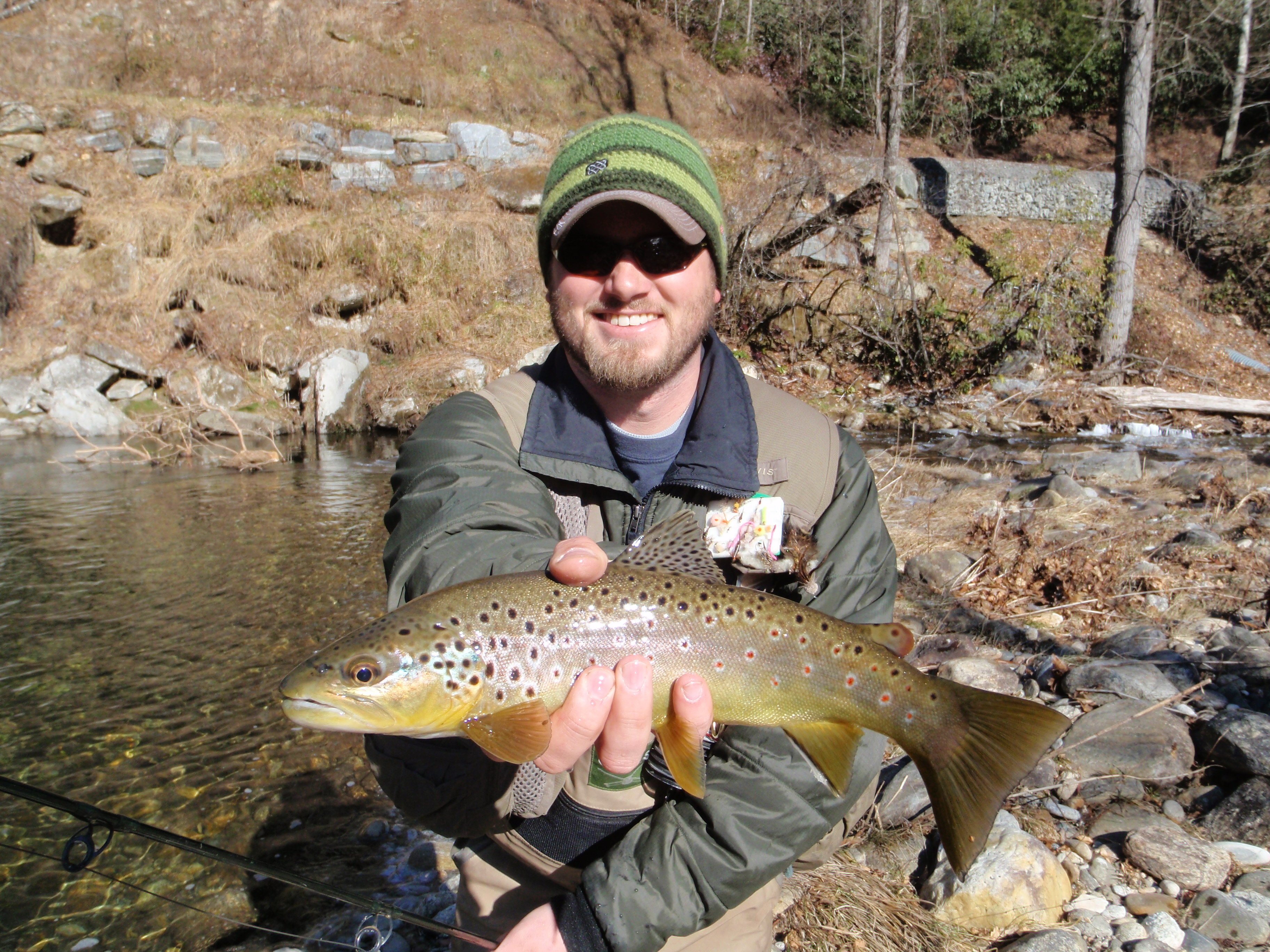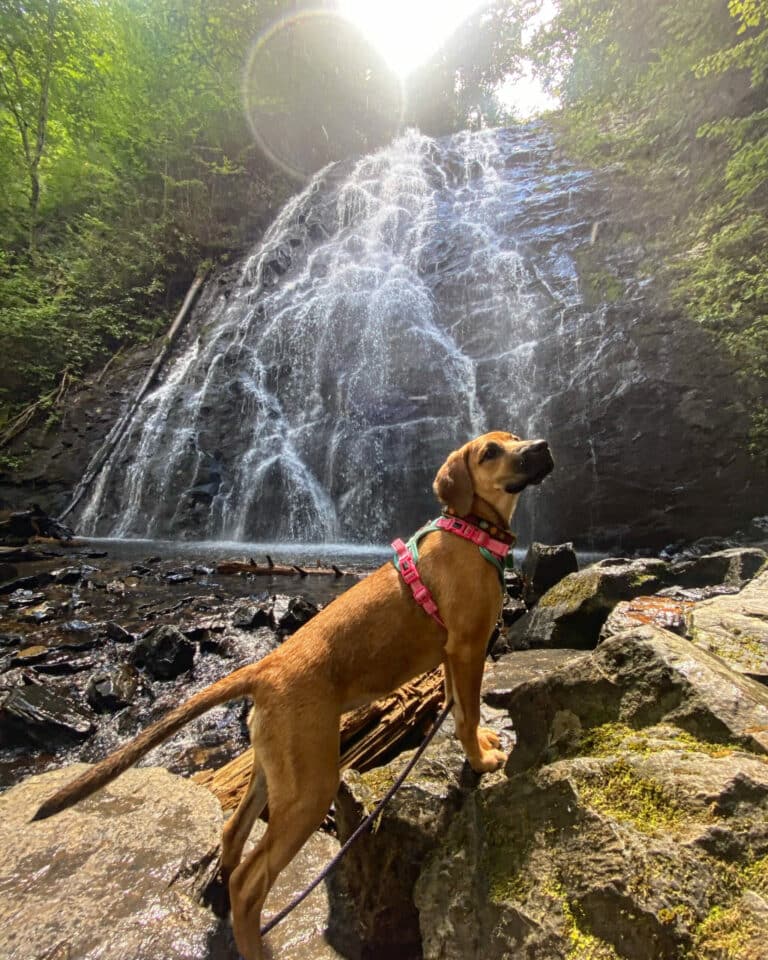Here in the Southeast, we are blessed with a year round trout fishery. Just like the different seasons of the year, trout behaviors can change dramatically depending on what the weather and water conditions are doing. Many anglers hang their waders up in the winter time, and wait for warmer days of Spring. It’s a shame, because these guys are missing out on some great fishing (with the right approach). Here are a few tips to make your next winter fly fishing trip a success.
1. PICK A LOCATION YOU HAVE CONFIDENCE IN.
Confidence is everything. Pick a location you are familiar with and have had success in before. Typically when I set out in search of bending a rod in the winter time I rule out those high elevation creeks and blue lines that are so much fun in the Spring and Summer.
These types of streams don’t see a lot of sunlight during the winter months, and since they are located up higher in the mountains where air temps are cooler the water temps will be a good bit cooler as well. Bigger watersheds are normally found in lower altitudes, and since the streambed is wider they receive much more sunlight that helps raise water temps which makes the fish more eager to feed. Tail-water fisheries may even be the best bet since they stem from a lake, and water temps remain pretty consistent over all.
All this being said, having confidence in where you set out to go might be the most important deciding factor of all. If you know there are fish where you are fishing, all that’s left to do is figure out what they will eat.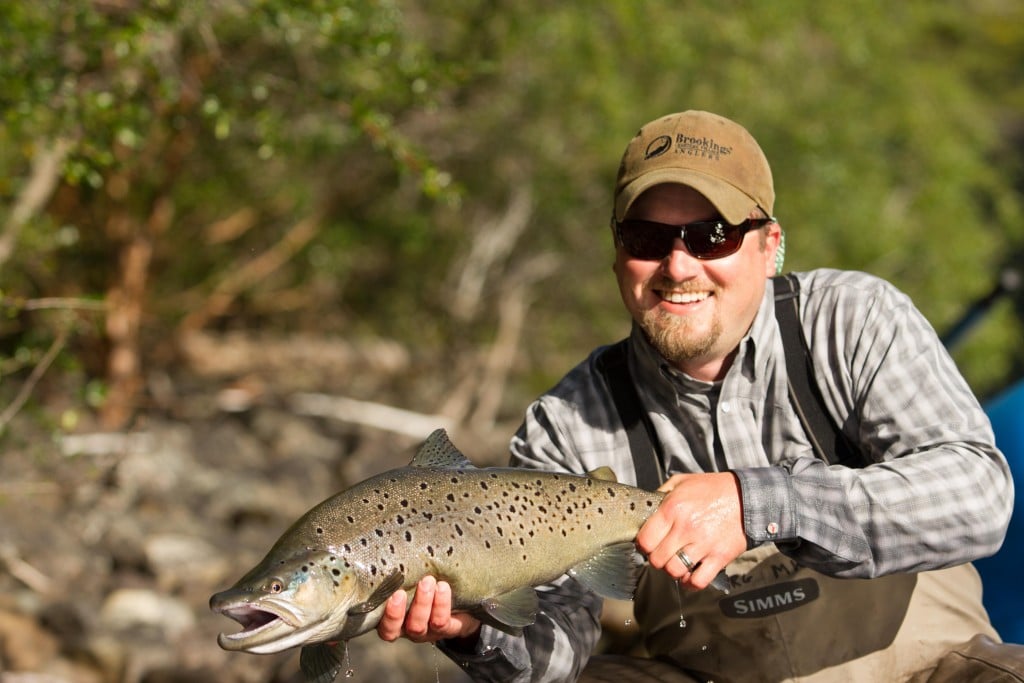 2. FISH THE APPROPRIATE TYPES OF WATER.
2. FISH THE APPROPRIATE TYPES OF WATER.
So you have arrived at the stream or river you have picked for the day. You have probably got some good memories of certain pools, riffles or runs that you have had success in at different times of the year. That’s a great starting point, but remembering that fish behave differently at different times of year, there are a couple things you can do to maximize your hook up rate. The first thing to do is SLOW DOWN.
The fish are there, but they are cold just like you are. They aren’t going to move 10 feet to grab your fly…..this time of the year they may only move a few inches or a couple feet (especially in the morning, or on extremely cold days). Instead of putting a few casts in each likely spot and moving on, put 30 casts in the most likely spots. READ THE WATER…look for places that have drop offs with moderate current running over them.
The trout don’t want to expend a lot of energy this time of year, they want to sit in a place where they have access to food drifting in the current, but they don’t want to have to work too hard to stay there. Remember that pool you fished in the fall and caught a bunch of fish in right at the top where the current dumps in? Well the fish are probably still in that pool, but they might not be sitting in that strong current they were in when the water was warmer. Try the tail-out of the pool…is there a deeper channel in that tail out? Is there a current break that makes a nice seam line?
3. LET THE FISH TELL YOU WHAT THEY WANT.
For the most part fishing in winter months includes a lot of nymph fishing. Especially during the morning hours when water temps are at their coldest, or on really cold days the trout will typically be deep, and to get strikes you have to put the flies where the fish are. I like fishing tandem nymph rigs during these situations (two nymphs rigged in tandem on your leader).
This allows me to play around with my flies and see what the fish are keying in on. Normally, I find myself fishing one bigger fly like a stonefly paired with another smaller nymph or midge that is likely what is most available to the trout at this time of year. Play around with it….if you are confident there are fish in front of you, don’t leave until you are starting to get some strikes. If you catch a fish, make a mental note of what the fish ate and where he ate it, because if you can find another place similar to that one, chances are you will be successful there as well.
Don’t get stuck on the nymphs though! Especially in the later months of February we can have some amazing hatches here in the Southern Appalachians. Sometimes you will notice the bugs before you notice the fish feeding on them. If you are seeing bugs, try finding a nice flat pool where you will easily notice any disturbance on the surface…..and then take a seat for a while. If we are talking early Feb, the bugs will probably be small (dark winter stones, midges, or blue winged olives). 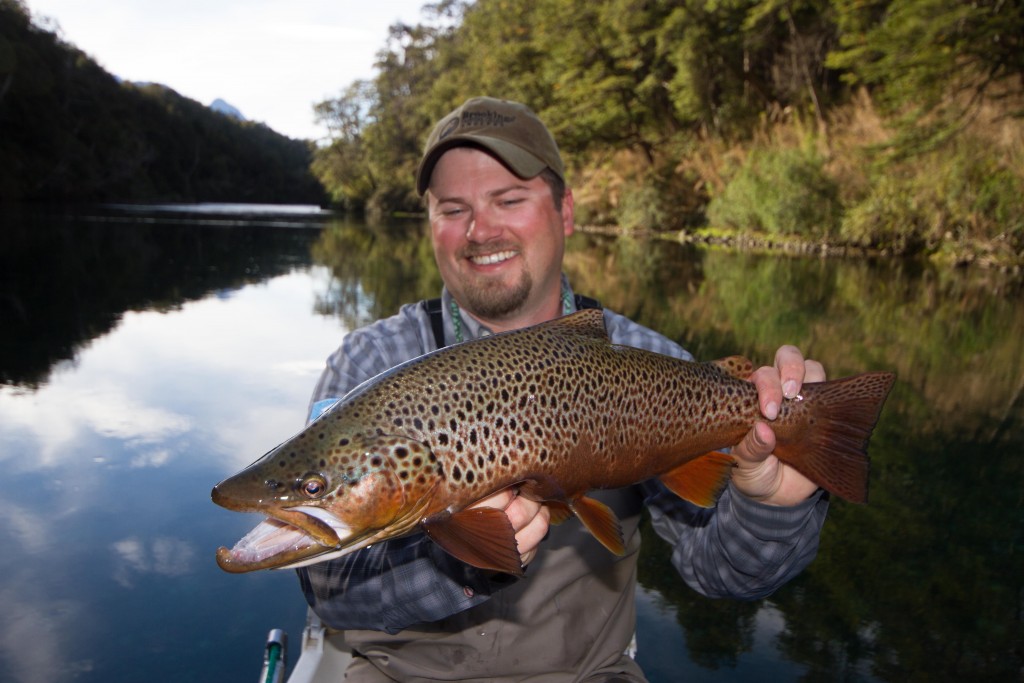 If this is the case those flat pools are your best bet to taking a fish on top. Look for “dimples”….they won’t be real splashy rises. The tip of their nose or tail might be all that breaks the surface. Try to figure out which it is. If you see the fishes nose come out, your dry fly is the answer, if it’s his tail you’ll want to fish an emerger just under the surface, or hang a zebra midge just under a small dry fly for strike detection. If you are lucky enough to be on the stream in one of those mild late Feb days when temps get in the 50’s or better, have your dry fly box at hand. Blue Quills and Quill Gordons could start coming off at any time.
If this is the case those flat pools are your best bet to taking a fish on top. Look for “dimples”….they won’t be real splashy rises. The tip of their nose or tail might be all that breaks the surface. Try to figure out which it is. If you see the fishes nose come out, your dry fly is the answer, if it’s his tail you’ll want to fish an emerger just under the surface, or hang a zebra midge just under a small dry fly for strike detection. If you are lucky enough to be on the stream in one of those mild late Feb days when temps get in the 50’s or better, have your dry fly box at hand. Blue Quills and Quill Gordons could start coming off at any time.
These are probably my favorite hatches of the year, and I think the trout will agree. These are some of the biggest bugs the fish have seen in a long time, and they drop their guard and go to eating. You don’t have to get real technical with it, a traditionally tied imitation in the right size and color will get plenty of attention. Pick a rising fish, take your time to get into position, and make a nice drag free drift to it. So you blew the cast and put the fish down? It happens to all of us. Give that one a few minutes to rest, and once you see him rising again try another shot.
4. WORK WITH THE CONDITIONS AT HAND.
In a perfect world, we could watch the weather forecast and water conditions, and pick the best day to go fishing. Just remember, the best day to go fishing is the day you CAN go fishing. So you have time to get out, but conditions aren’t optimal….that’s life right? Invest some money into some good foul weather gear, and you’ll surprise yourself as to what kind of weather you can comfortably fish in, and be successful at it.
With the exception of extreme weather (flooding/drought), here in the Southern Appalachians fish can be caught any day of the year. Getting out in all types of weather conditions will magnify your understanding of trout and the way they act ten-fold! It’s like anything else, it won’t happen overnight, but the more you do it the more you will understand it. Pretty soon you will begin to pick up on all the little subtle clues that are going on around you, and begin to put them together like a jigsaw puzzle. That’s why we love this sport right? Its challenging, and if it were easy it would be boring.
5. BE PREPARED.
There is nothing worse than figuring out what the fish are doing, and not having the right flies to maximize on the opportunity. Here are a list of flies that I will never leave home without on a February outing: Dark winter stones – this is the primary hatch for most streams in the south during most of February.
I carry both the nymph and dry fly version in size 14-16 Zebra copper johns and prince nymphs imitate the nymph, and a sparsely tied black caddis works for the dry in case you can’t come up with a direct imitation of the winter stone.
Midges – although they are small, and some time a pain to a lot of fisherman, midges are widely available to the fish all times of the year, and can be deadly effective. For the most part, and assortment of olive, red, and black zebra midges in sz 18-22 will work for the sub-surface imitation.
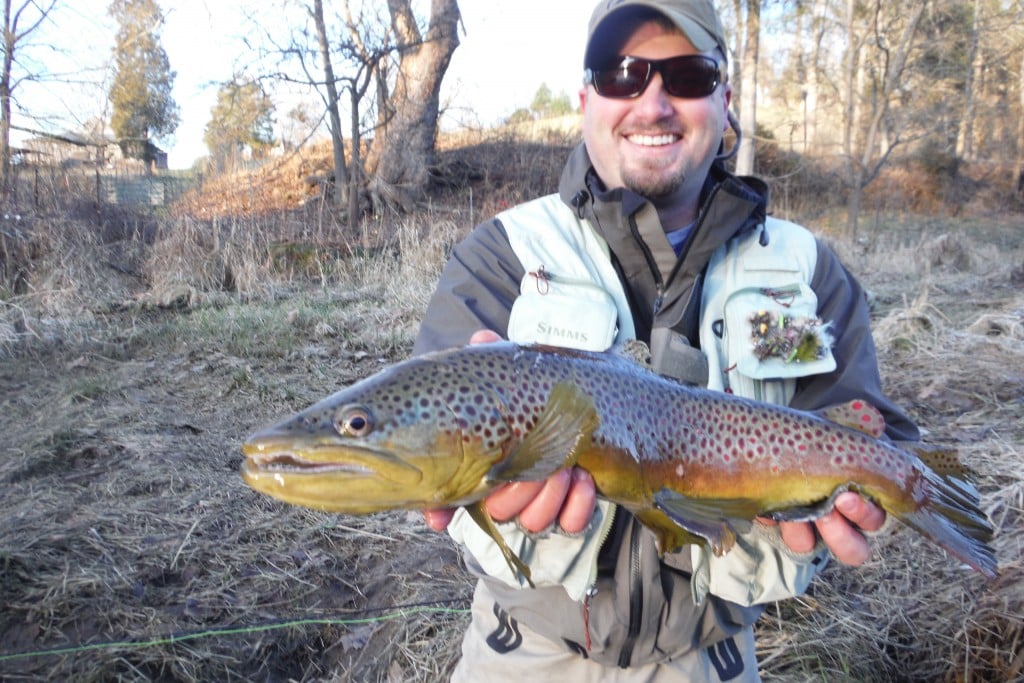 For a dry fly a Griffiths Gnat in 18 – 22 is about all you need. Blue Winged Olives – these guys hatch sporadically throughout the colder months, and they really like overcast days. Have some in sizes 16-20….personally I like the dry flies tied parachute style. For the nymph, a pheasant tail works great. Blue Quills – probably the first major hatch that typically begins in late Feb. These guys are about a size 14 or 16. A traditionally tied (catskill version) dry fly works great. If they are hatching I rarely find myself fishing a nymph, but a soft hackle pheasant tail would do the trick.
For a dry fly a Griffiths Gnat in 18 – 22 is about all you need. Blue Winged Olives – these guys hatch sporadically throughout the colder months, and they really like overcast days. Have some in sizes 16-20….personally I like the dry flies tied parachute style. For the nymph, a pheasant tail works great. Blue Quills – probably the first major hatch that typically begins in late Feb. These guys are about a size 14 or 16. A traditionally tied (catskill version) dry fly works great. If they are hatching I rarely find myself fishing a nymph, but a soft hackle pheasant tail would do the trick.
Quill Gordon – these are the BIG GUYS. They normally range from a size 8 – 12! The Catskill tied version works great for a dry fly, and again if they are hatching you won’t find me with a nymph on but if you must, a soft hackle hare’s ear will do.
Black Caddis – most of the time these guys are found in March, but I have seen them around in late Feb, so it doesn’t hurt to have some. Caddis are a little more tricky than mayflies. I have found swinging a dark-colored soft hackle downstream in a size 14 is much more effective than dead drifting a dry fly. But again, it doesn’t hurt to carry a few Black Elk Hair Caddis in 14-16.
Attractors –there are many bugs available to the fish that don’t hatch during the time you are fishing, and many flies that don’t necessarily imitate one thing, but a wide range of things.
Here are some attractors that have worked well for me during the winter months:
Pats Rubber Leg Stone in sizes 8-12
Zug Bugs sizes 12-16
Prince Nymphs size 8 – 16
Soft Hackle Hares Ear size 14-18
Guides Choice Hares ear size 12-18
Sassi Solution 14-18
Rainbow Warrior sz 16-20
Partridge & Olive sz 16 – 20
Parachute Adams sz 10 – 18
Wooly Bugger Olive sz 6-12
Squirmy Worm sz 14.
Hopefully some of these tips will encourage you to get out and enjoy a few blissful days this February. The fishing can be fantastic, and rarely do you have to put up with the crowds! For any further questions, please call Brookings Anglers @ (828) 743 3768. Happy fishing!
[divider]about the author[/divider]
Matt Canter was born in Greensboro, North Carolina. He spent his youth fishing farm ponds in between family trips to the mountains and the coast, where fishing tended to be the activity of choice. While attending Western Carolina University, Matt spent as much or more time on the rivers as he did in the classroom. After several years of managing Brookings’ Cashiers Village Anglers, Matt made a life long wish come true, and became an owner in the business.
